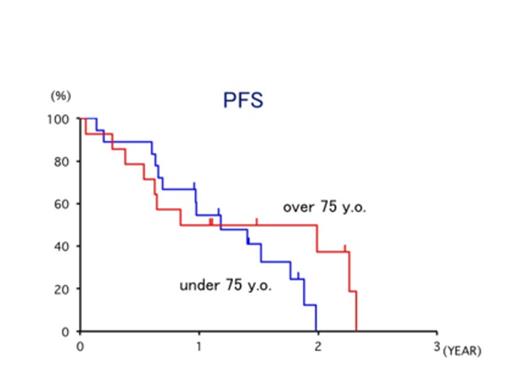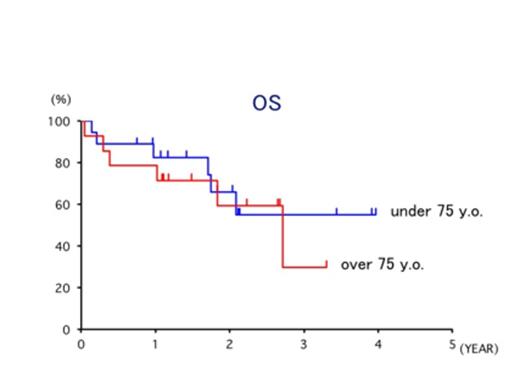Abstract
The three drugs combination of cyclophosphamide, bortezomib and dexamethasone (CyBorD) is highly active regimen for the treatment of the patients with multiple myeloma (MM). However, twice-weekly schedule of bortezomib and high dose dexamethasone has been shown to cause significant toxicities, including peripheral neuropathy (PN) and thrombotic events. Once-weekly bortezomib induction therapy with reduced dosage of dexamethasone (modified-CyBorD) has shown less toxicity with high response rate equal to original regimen (Reeder, CB et al. Leukemia 2009). However, it was found more than half of the patients still developed bortezomib induced PN (BiPN) in this modification. Thus it was still concerned adverse event for the transplant ineligible patients, especially frail elderly patients because it often caused interruption or withdrawal of the treatments, resulting in fewer efficacies. Under these circumstances, we have studied the reduced-dosage of CyBorD regimen (reduced-CyBorD) in the treatment of transplant ineligible patients with MM to assess response and toxicity.
The protocol consisted of bortezomib given intravenously at a dose of 1.3 mg/m2 once a week on days 1, 8, 15, cyclophosphamide orally at a dose of 50 mg daily on days 1-21, and dexamethasone orally or intravenously at a dose of 20 mg daily on days 1,2,8,9,15,16 in 4-week cycles. Total of 32 patients, including 20 newly diagnosed and 12 refractory, were treated with reduced-CyBorD and evaluated its efficacy and safety.
The median age was 72 years (range from 62 to 88). 14 patients were more than 75 year-old (44 %). 15 patients were female. According ISS, 4 patients were classified in stage I, 10 were in II, and 18 were in III. The overall response (ORR) was 90.6 % with 43.8 % of CR/nCR (6 CR, 8 nCR, 7 VGPR and 8 PR). Hematological adverse events were anemia (18.8%; G1/2 n=7), neutropenia (37.5%; G1/2 n=10, G3/4 n=2), lymphocytopenia (43.8%; G1/2 n=10, G3/4 n=4), thrombocytopenia (12.5%; G1/2 n=1, G3/4 n=3). Non-hematological adverse events were pneumonia (12.5%; G2 n=2, G3 n=2), VZV infection (15.6%; G1/2 n=5), cerebral infarction (3.1%; G2 n=1). Importantly, only 6 patients (18.8%) developed grade 1 PN, and no patient reduced or discontinued bortezomib due to PN. The overall survival (OS) at 1, 2, and 3 years were 81, 63.1, and 45.9 %, respectively. In this study, neither inferior response nor poor survivals were significantly observed between over 75 year-old patients group (n=14) and under 75 year-old group (n=18) (ORR; 100 vs 83.4 %, CR/nCR; 42.9 vs 44.4 %, 1-year PFS 54.6 vs 50 %, and 3-year OS 29.8 vs 55 %).
Reduced-CyBorD with three times once-weekly bortezomib retained high efficacy seen in standard and modified CyBorD previously reported (ORR; 90.6 vs 88 and 93 %, CR/nCR; 43.8 vs 39 and 43 %). These results showed that our regimen has less toxicity, especially BiPN (18.8 %) compared with those previous regimens (64 % and 57 %), resulting in no discontinuation nor reduction of bortezomib. Furthermore, over 75 year-old patients group did not showed inferior outcomes in comparison with under 75 year-old patients group. Our results suggested that reduced-CyBorD might be suitable for the transplant ineligible patients, especially elderly frail patients (over 75 year-old) with MM.
No relevant conflicts of interest to declare.
Author notes
Asterisk with author names denotes non-ASH members.



This feature is available to Subscribers Only
Sign In or Create an Account Close Modal